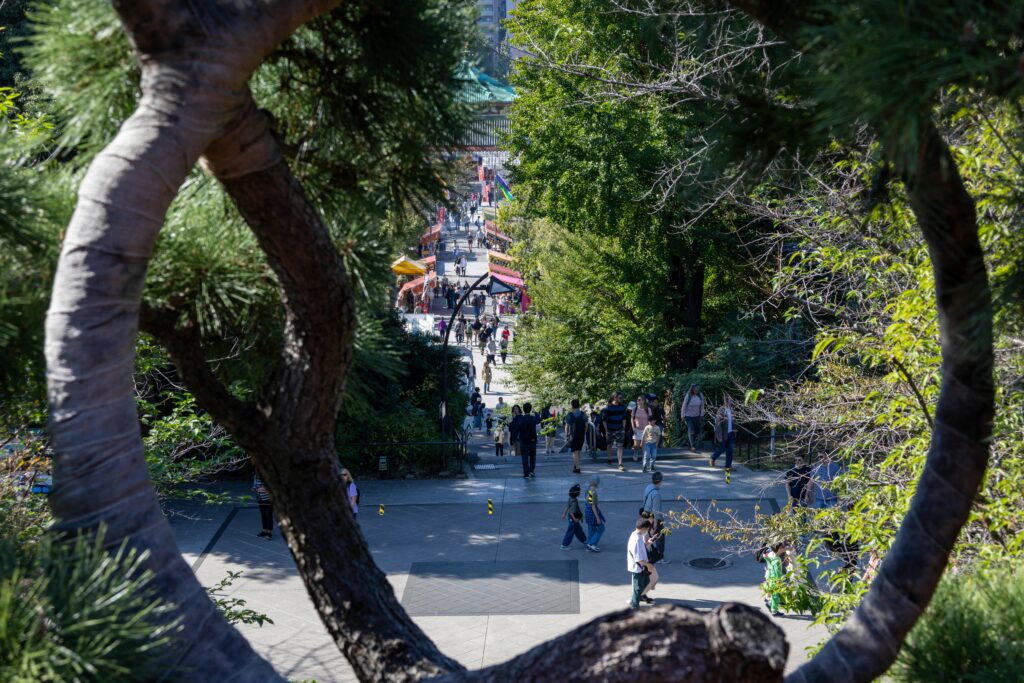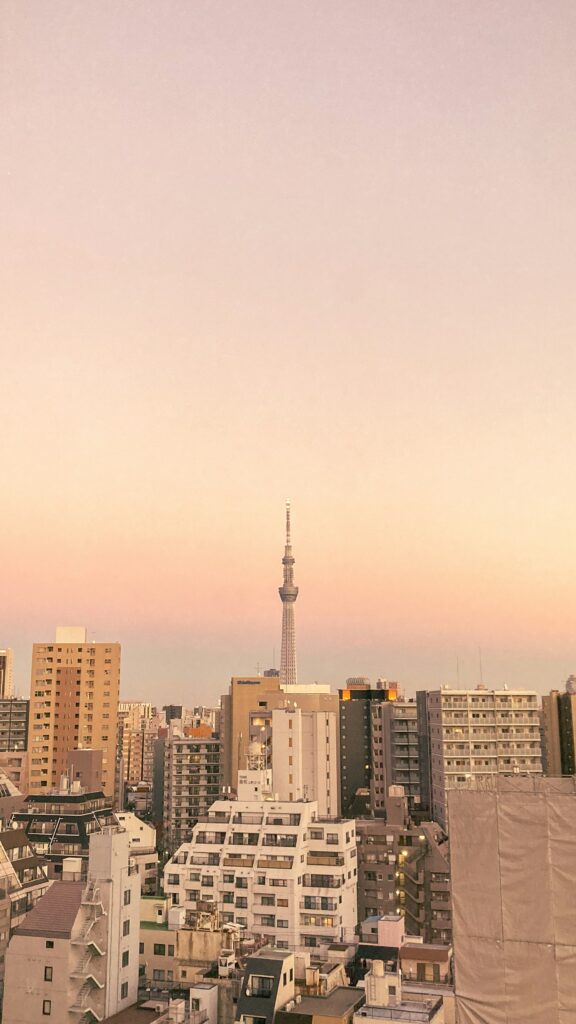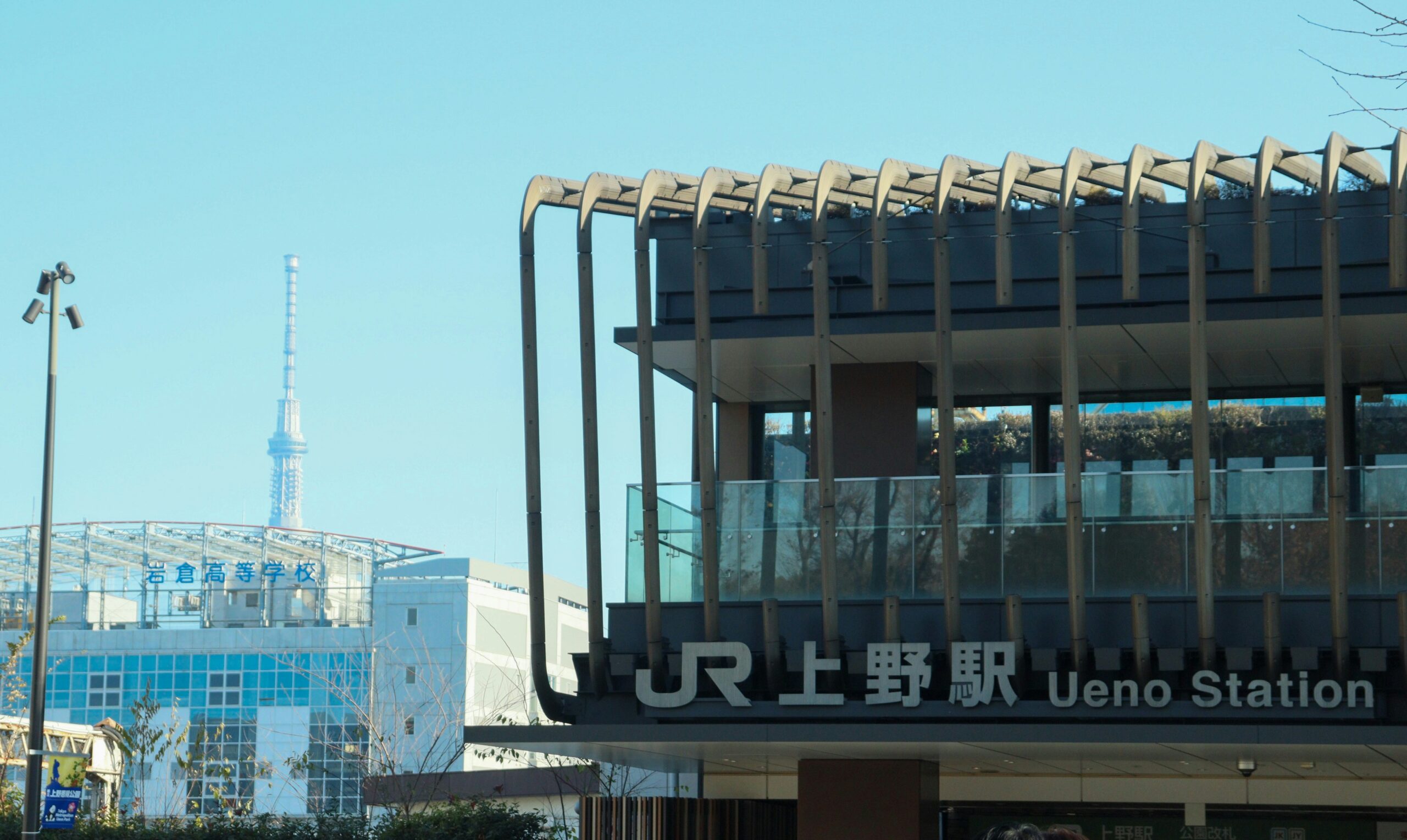One weekend in early summer, I decided to visit Ueno in Tokyo.
I had just wrapped up a major project in London. Life in the marketing industry was stimulating, but I often found myself swept away by the constant rush and waves of information, with little room left to reflect on my own thoughts and feelings.
Then, a simple phrase from a friend living in Japan lingered in my mind:
“Ueno has sky, greenery, and quiet art. It’s Tokyo, but somehow time flows differently there.”
Drawn by those words, I boarded a train bound for Ueno. It was only about ten minutes from Tokyo Station, yet the moment I stepped out of Ueno Station’s gates, the air felt distinctly different.
The city’s usual pressure seemed to lift. The sky stretched wide above, and a soft breeze passed through. Right beside the station lay the expansive greenery of Ueno Onshi Park, where sunlight filtered through the trees and danced at my feet. The chirping of birds, the laughter of small children, and the sight of an elderly man reading quietly on a bench—each of these gently unraveled the tension in my chest.
My first stop was the Tokyo National Museum, Japan’s oldest, where art and cultural treasures from across Japan and the world rest in calm silence.
I paused in front of a wooden Buddha statue from the Kamakura period. The flowing lines of the robe, the tranquil eyes, and the powerful hands joined in prayer—all carved nearly a thousand years ago. I was left speechless, awed by the sheer presence of a figure that had received countless prayers across the centuries.
The stillness inside the museum felt like a prayer itself. Everyone moved quietly, focusing wholly on the act of “seeing.”
It struck me: I had visited many museums in London, but here, there was a different kind of ma—the Japanese sense of space and pause. Even the silence behind the artworks seemed to be on display.

By the time I stepped outside, the sunlight had grown stronger. Following the shade of the trees, I wandered into a wooden restaurant nestled within the park.
Its interior, infused with the scent of cedar, opened out to a garden, sunlight streaming through the windows. Surrounded by serenity, I ordered hitsumabushi—grilled eel finely chopped and laid carefully over fluffy white rice.
First, you taste it as it is. Then, with aromatic condiments. And finally, you pour a warm broth over the bowl to finish.
This three-part journey through a single dish felt like a metaphor for travel itself: fresh in the beginning, deepening in the middle, and ultimately seeping gently into the heart. Even in food, I realized, there lies the Japanese aesthetic and their philosophy of time.
That afternoon, I visited the Tokyo Metropolitan Art Museum, where a special exhibition on the Impressionists was being held.
Monet, Sisley, Pissarro—their soft, light-filled landscapes stirred something nostalgic within me. A quiet warmth, like a sunlit memory, spread across my chest.
As I stood there, I noticed a man gazing intently at one of the paintings.
He wore a white open-collar shirt and a linen jacket, a leather sketchbook slung over his shoulder. He looked about my age. His face bore an expression of deep concentration, tinged with something wistful.
“It’s a beautiful painting,” I said.
He turned and smiled gently. “Don’t you think the light in this reminds you a bit of early summer in Ueno?”
With that, the conversation flowed easily. His name was Sasaki. He had once studied in Paris and now taught art at a high school in Tokyo. As we spoke, he began to talk about Ueno with quiet passion
“To many, Ueno might just seem like a tourist spot,” he said. “But it’s also where Japan’s modern culture first began to take root.”
“In the Meiji era, when Japan was eagerly embracing Western knowledge and art, Ueno became one of the country’s first cultural hubs. Museums, a zoo, and art galleries were built one after another, and the predecessor to the University of Tokyo was just nearby. It was from this very place that a new era of intellect and beauty began to spread,” he explained with the clarity of a teacher.
His words caught me by surprise. Until then, I had seen Ueno only as a place of greenery and galleries. But behind that impression ran a deeper current—a history of culture shaped over time, as Japan moved toward becoming a modern nation.
“In the evening, take a walk around Shinobazu Pond,” he suggested. “The breeze there feels wonderful. I’ll probably be sketching nearby.”
He gave a little wave and disappeared down the stairs.
As I wandered through the park, I came across a small kanmidokoro, a traditional Japanese sweets shop. Its wooden lattice doors opened softly, and inside, the gentle sound of a fan and a wind chime filled the air.
I ordered a matcha kakigōri—shaved ice flavored with rich green tea syrup, topped with soft rice dumplings and sweet red beans.
As it melted on my tongue, the subtle bitterness blended with delicate sweetness, sending a cool breeze through my entire body.
It tasted like a summer memory from childhood, long forgotten but suddenly vivid.
By evening, I made my way to Shinobazu Pond. The breeze across the water was gentle, and the lotus leaves swayed in silence.
Benches lined the shore, where people lingered in quiet reflection.
There, I saw Sasaki again, sketchbook on his lap, pencil dancing across the page. I approached softly and sat beside him.
“You came,” he said, smiling.
I nodded. “It’s peaceful here.”

He asked, “What brought you on this journey?”
I thought for a moment before replying.
“Maybe I was looking for quiet. Or maybe I needed space. Life in London is exciting, but at times, I felt suffocated. I needed a place where nothing had to be filled.”
He nodded and said slowly,
“Japanese aesthetics value not just what is drawn, but what is left undrawn. In the blank spaces and silences, we reflect our hearts. Ueno is one of the few places where those spaces still exist.”
The sky reflected in the pond was beginning to blush with sunset. A gentle breeze stirred across the lotus leaves.
What I encountered on this trip was not merely art or scenery.
It was silence and space. The layered time of a city. And the quiet conversations born between strangers.
These were discoveries I could not have made without leaving home.
In my everyday life, flooded with information, I may have lost the ability to listen to my own inner voice.
But now, I know this:
There is a place, in the very heart of Tokyo, where sky and greenery remain, where art speaks softly, and where conversations can blossom.
The stillness of Ueno reminded me of a place I had forgotten—my own point of return.
And perhaps, that memory will remain a quiet guiding light for the journey ahead.
Something New Travel

